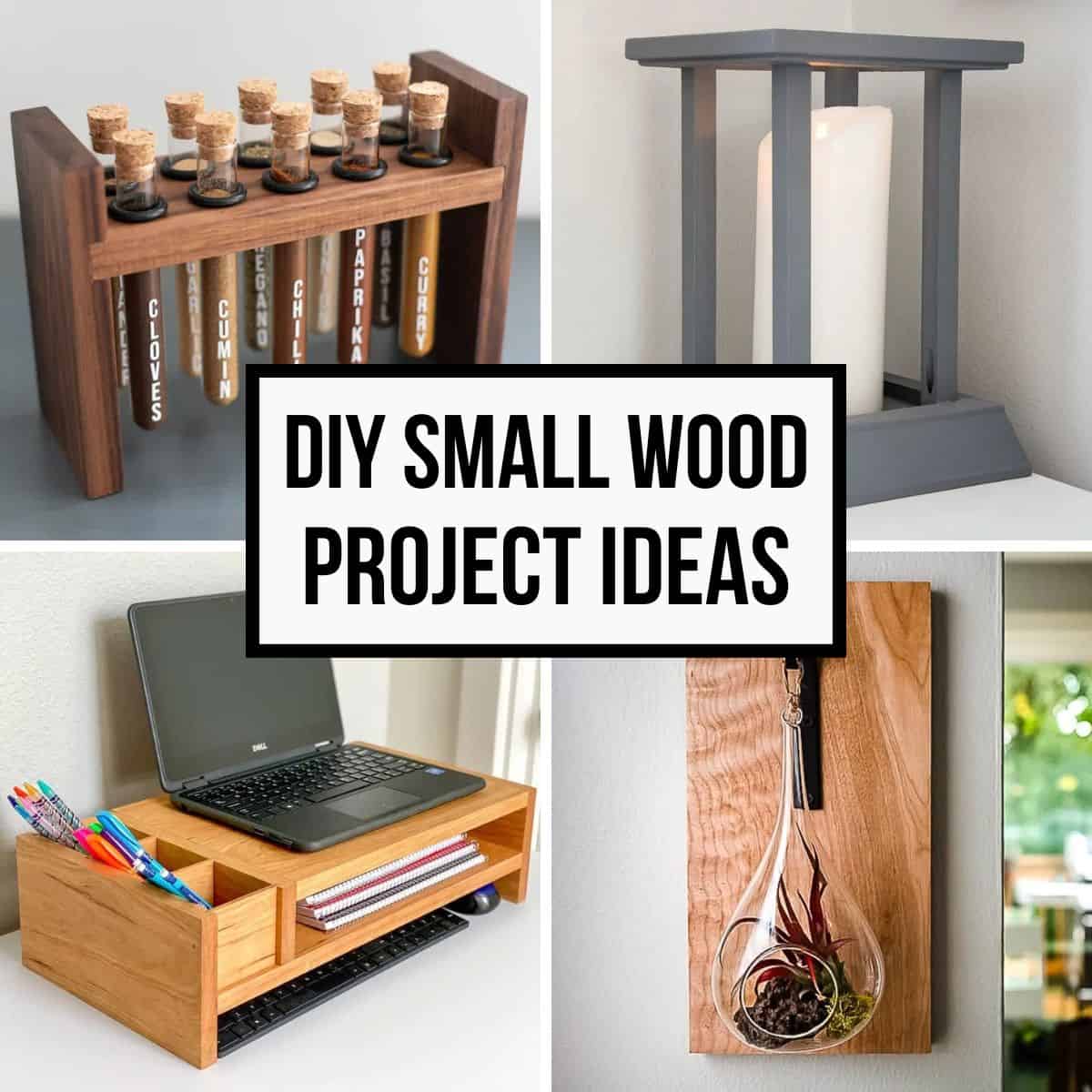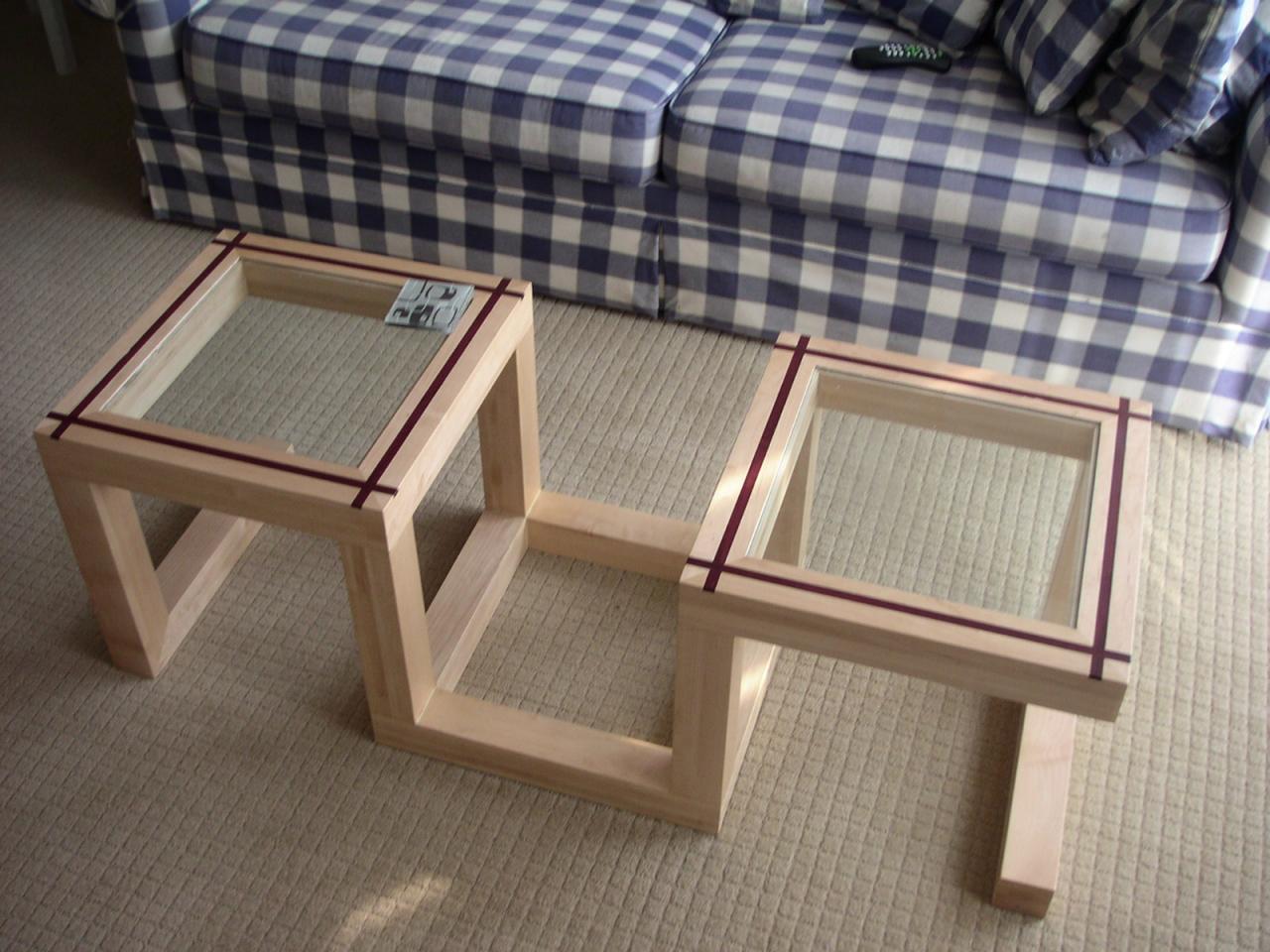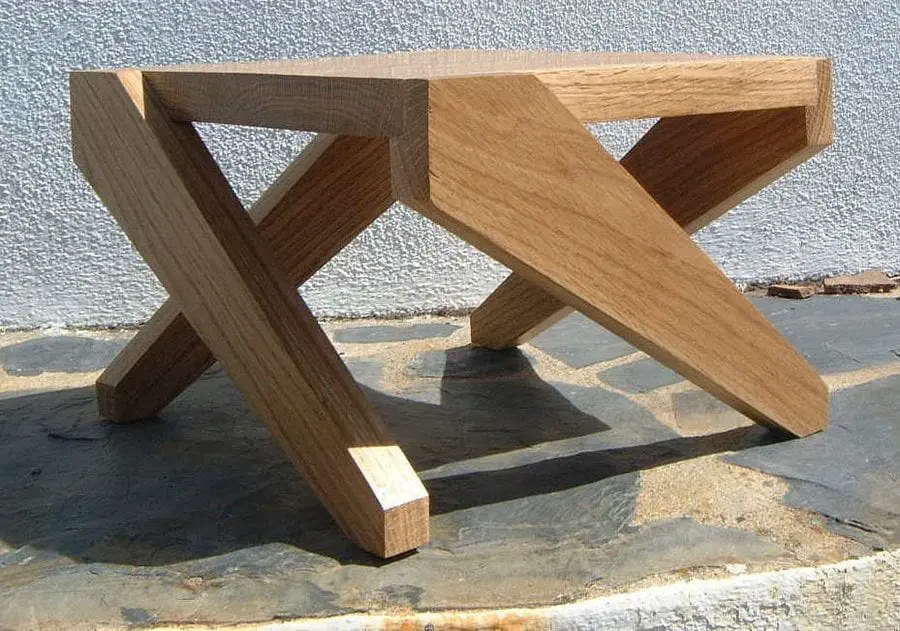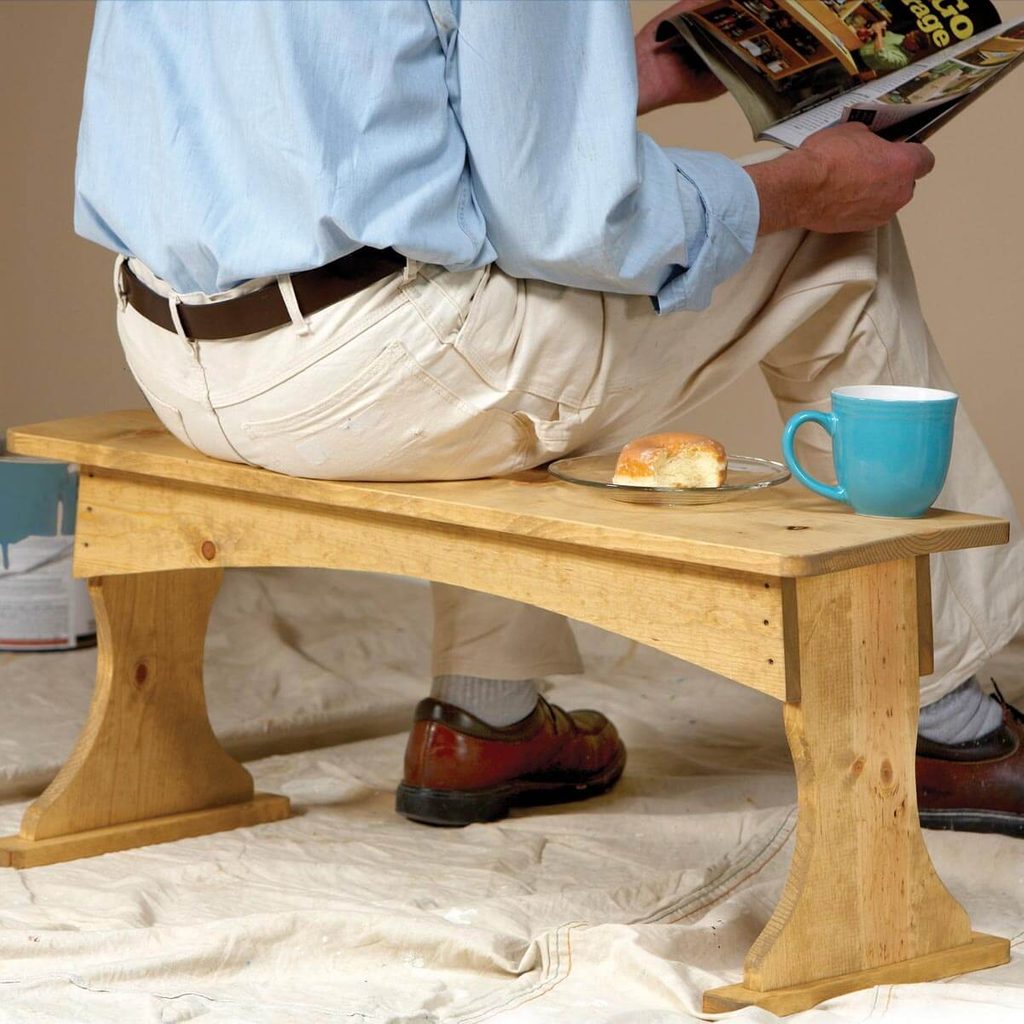Simple woodworking projects offer a fulfilling and rewarding experience for beginners, allowing you to create practical and decorative items while honing your skills. From building a birdhouse to crafting a wooden picture frame, these projects provide a stepping stone into the world of woodworking, fostering creativity and a sense of accomplishment.
This guide will walk you through the essential tools and materials, project ideas, basic techniques, and finishing touches needed to embark on your woodworking journey. Whether you’re looking to create gifts for loved ones, personalize your home décor, or simply enjoy the therapeutic process of working with wood, these simple projects are a great place to start.
Introduction to Simple Woodworking Projects

Simple woodworking projects are crafts that involve using basic woodworking tools and techniques to create functional or decorative items from wood. These projects are typically small in scale and can be completed within a reasonable timeframe, making them ideal for beginners or those with limited woodworking experience.
Engaging in simple woodworking projects offers numerous benefits, including:
Benefits of Simple Woodworking Projects
Simple woodworking projects can provide a sense of accomplishment and satisfaction, as you create something tangible with your own hands. The process of woodworking can also be a relaxing and therapeutic activity, allowing you to focus on the task at hand and escape from everyday stresses. Moreover, woodworking can be a creative outlet, allowing you to express your individuality through the design and construction of your projects.
Beginner-Friendly Woodworking Projects
There are many beginner-friendly woodworking projects that are perfect for those just starting out. Here are a few examples:
- Cutting Boards: Cutting boards are a practical and essential kitchen item that can be easily made from wood. They require basic cutting and sanding techniques and can be customized with different shapes, sizes, and wood types.
- Wooden Coasters: Wooden coasters are a simple and elegant way to protect your furniture from spills and scratches. They can be made from various wood species and can be decorated with different finishes, such as paint, stain, or varnish.
- Birdhouses: Birdhouses are a fun and rewarding project that can attract feathered friends to your backyard. They involve basic carpentry skills, such as cutting, assembling, and attaching a roof.
- Picture Frames: Picture frames are a classic woodworking project that allows you to showcase your favorite photos or artwork. They can be made from different types of wood and can be customized with various decorative elements.
- Small Storage Boxes: Small storage boxes are a practical and versatile project that can be used to organize various items. They can be made from different types of wood and can be decorated with different finishes, such as paint, stain, or varnish.
Project Ideas for Beginners
Woodworking is a rewarding hobby that can be enjoyed by people of all ages and skill levels. If you’re new to woodworking, there are many simple projects you can start with that will help you learn the basics and build your confidence.
Here are a few project ideas for beginners:
Simple Woodworking Projects
- Cutting Board: A cutting board is a practical and useful item that can be made from a variety of woods. It’s a great project for beginners because it’s relatively simple to construct and doesn’t require a lot of tools. You can find detailed instructions online for making cutting boards of various shapes and sizes.
- Wooden Box: A wooden box is another versatile project that can be used for storage, gifts, or even as a decorative item. You can use a variety of woods and finishes to create a unique box that reflects your personal style. The box can be made with simple joinery techniques, such as butt joints or rabbet joints.
- Picture Frame: A picture frame is a great way to showcase your favorite photos or artwork. You can make a simple picture frame from scrap wood or purchase pre-cut pieces from a craft store. The frame can be stained, painted, or left natural to complement your décor.
- Wooden Coasters: Wooden coasters are a practical and stylish way to protect your furniture from spills. They’re also a great way to practice your woodworking skills and experiment with different wood finishes. You can use a variety of woods and shapes to create unique coasters that reflect your personal style.
- Birdhouse: A birdhouse is a fun and rewarding project that can be enjoyed by the whole family. It’s a great way to attract birds to your yard and provide them with a safe place to nest. You can find detailed instructions online for building a variety of birdhouses, from simple designs to more elaborate models.
Building a Simple Birdhouse
Building a simple birdhouse is a great way to introduce yourself to woodworking. Here’s a step-by-step guide:
Materials:
- Wood: Cedar, pine, or redwood are good choices for birdhouses because they are naturally resistant to rot and decay.
- Screws: Use screws that are long enough to go through the wood and into the next piece.
- Saw: A handsaw or circular saw can be used to cut the wood.
- Drill: A drill is needed to pre-drill holes for the screws.
- Sandpaper: Sandpaper is used to smooth the edges of the wood and remove any splinters.
- Paint or stain: (Optional) You can paint or stain the birdhouse to match your décor or to protect the wood.
Instructions:
- Cut the wood: Cut the wood to the dimensions specified in the birdhouse plans.
- Drill pilot holes: Drill pilot holes for the screws to prevent the wood from splitting.
- Assemble the birdhouse: Assemble the birdhouse according to the plans. Make sure the pieces are aligned and secure.
- Sand the birdhouse: Sand the birdhouse to smooth the edges and remove any splinters.
- Paint or stain the birdhouse: (Optional) Paint or stain the birdhouse to your liking.
- Hang the birdhouse: Hang the birdhouse in a location that is sheltered from the wind and rain.
Creating a Wooden Picture Frame
A wooden picture frame is a simple and elegant way to showcase your favorite photos or artwork. Here’s a step-by-step guide:
Materials:
- Wood: You can use scrap wood or purchase pre-cut pieces from a craft store.
- Miter saw or hand saw: A miter saw or hand saw is needed to cut the wood at 45-degree angles.
- Wood glue: Wood glue is used to join the pieces of wood together.
- Clamps: Clamps are used to hold the pieces of wood together while the glue dries.
- Sandpaper: Sandpaper is used to smooth the edges of the wood and remove any splinters.
- Paint or stain: (Optional) You can paint or stain the picture frame to match your décor or to protect the wood.
- Glass or acrylic sheet: (Optional) You can add glass or an acrylic sheet to the picture frame to protect the photo or artwork.
- Picture frame hardware: You can use picture frame hardware to attach the back of the frame to the front.
Instructions:
- Cut the wood: Cut the wood to the dimensions specified in the picture frame plans. Make sure to cut the pieces at 45-degree angles.
- Assemble the frame: Apply wood glue to the edges of the wood and assemble the frame. Use clamps to hold the pieces together while the glue dries.
- Sand the frame: Sand the frame to smooth the edges and remove any splinters.
- Paint or stain the frame: (Optional) Paint or stain the frame to your liking.
- Add glass or acrylic sheet: (Optional) If you are using glass or an acrylic sheet, cut it to the size of the picture opening and insert it into the frame.
- Attach the back of the frame: Attach the back of the frame to the front using picture frame hardware.
Finishing Touches

The finishing touches are what elevate a woodworking project from good to great. This stage involves sanding, smoothing, and applying a protective coating that enhances the natural beauty of the wood or provides a desired color and sheen.
Sanding and Smoothing
Sanding is essential for creating a smooth, even surface for applying finishes. It also helps to remove any imperfections or tool marks left behind during construction. Here’s a general guide:
- Start with coarse-grit sandpaper (80-120 grit) to remove any major imperfections. Work with the grain of the wood to avoid creating scratches.
- Progress to finer grits (150-220 grit) to smooth out the surface and remove scratches from the previous sanding.
- Finish with very fine-grit sandpaper (240-400 grit) for a super smooth surface, especially if you plan to use a clear finish.
Remember to sand in the direction of the wood grain, as sanding against the grain can create noticeable scratches. For curved surfaces, use sanding blocks or sponges to conform to the shape.
Wood Finishes
Wood finishes protect the wood from moisture, dirt, and wear, and enhance its natural beauty or create a desired color. Common types of wood finishes include:
- Paints: Paints provide a durable, opaque coating that can be used to change the color of the wood or cover imperfections. They come in a wide variety of colors and finishes, including matte, satin, semi-gloss, and gloss.
- Stains: Stains penetrate the wood’s pores and change its color without hiding the grain. They come in a variety of colors, from light to dark, and can be used to create a natural or distressed look.
- Varnishes: Varnishes are clear finishes that protect the wood from moisture and wear. They come in a variety of finishes, including matte, satin, semi-gloss, and gloss. Varnishes can be used to enhance the natural beauty of the wood or to create a more polished look.
- Polyurethanes: Polyurethanes are durable, water-resistant finishes that offer excellent protection against scratches and wear. They are available in both oil-based and water-based formulations.
- Lacquer: Lacquer is a fast-drying finish that produces a hard, durable surface. It is often used on furniture and other items that require a high-quality finish.
Applying Finishes Effectively
- Prepare the surface: Ensure the wood is clean, dry, and free of dust before applying any finish. A tack cloth is a helpful tool for removing dust particles.
- Apply thin coats: Multiple thin coats are better than one thick coat. Allow each coat to dry completely before applying the next.
- Use a brush, roller, or spray: The application method will depend on the type of finish and the size of the project. For small projects, a brush is often the best option. Rollers are good for larger surfaces, and sprayers provide a smooth, even finish.
- Sand between coats: For most finishes, lightly sand between coats with fine-grit sandpaper (220-400 grit) to smooth out any imperfections and ensure a smooth, even finish.
- Follow the manufacturer’s instructions: Always read and follow the manufacturer’s instructions for the specific finish you are using. This will ensure that the finish is applied correctly and achieves the desired results.
Tips for Success
Woodworking, like any craft, takes time, patience, and practice to master. There will be challenges along the way, but don’t let them discourage you. With the right mindset and approach, you can overcome these hurdles and enjoy the rewarding experience of creating something beautiful with your own hands.
Overcoming Common Challenges
Woodworking presents unique challenges that can be frustrating, but with the right knowledge and techniques, you can overcome them.
- Measuring and Cutting Accurately: Inaccurate measurements and cuts can lead to misaligned pieces and a project that doesn’t come together as intended. To avoid this, invest in a good measuring tape and a quality saw. Take your time when measuring and cutting, and double-check your measurements before making the final cut. Practice using a variety of cutting techniques, such as crosscutting, ripping, and mitering, to ensure you are comfortable with each one.
- Working with Wood: Wood is a natural material that can be unpredictable. Different species of wood have different characteristics, such as hardness, grain patterns, and tendency to warp. Understanding these characteristics is crucial for choosing the right wood for your project and working with it effectively. Before starting a project, familiarize yourself with the properties of the wood you’ll be using. For example, if you’re working with softwood, like pine, it’s more susceptible to scratches and dents than hardwood, like oak. Be mindful of the wood’s grain direction when cutting and sanding to prevent tear-out or splintering.
- Finishing Techniques: Applying a finish to your woodworking project is a crucial step that can enhance its beauty and protect it from wear and tear. There are numerous finishing techniques, each with its own advantages and disadvantages. Experiment with different finishes, such as oil, wax, or polyurethane, to find one that suits your needs and preferences. Remember, preparation is key for a successful finish. Sanding the wood smooth before applying the finish will ensure a uniform and even coat.
Patience and Practice
Woodworking requires patience and practice. Don’t get discouraged if your first few projects aren’t perfect. Every project is a learning opportunity. Take your time, focus on each step, and don’t be afraid to make mistakes. The more you practice, the better you’ll become at woodworking.
Joining Woodworking Communities
Connecting with other woodworkers can provide valuable support and inspiration. Join online forums, attend local woodworking classes, or visit woodworking stores to meet other enthusiasts. Sharing your projects and experiences with others can help you learn from their mistakes and successes. Woodworking communities can also be a great source of inspiration for new projects.
Summary
With patience, practice, and a touch of creativity, you can transform simple pieces of wood into beautiful and functional objects. As you progress, you’ll discover the joy of woodworking and the satisfaction of creating something with your own hands. Remember, the journey is as important as the destination, so embrace the learning process and enjoy the rewarding experience of crafting your own woodworking creations.
Simple woodworking projects can be a great way to add a personal touch to your home, and the holiday season is the perfect time to get creative. If you’re looking for some festive inspiration, check out Make Your Own Christmas Decorations: DIY Joy for the Holidays for ideas on crafting your own unique ornaments, garlands, and other decorations.
From simple wooden snowflakes to intricate gingerbread houses, there’s a woodworking project for everyone to enjoy.


